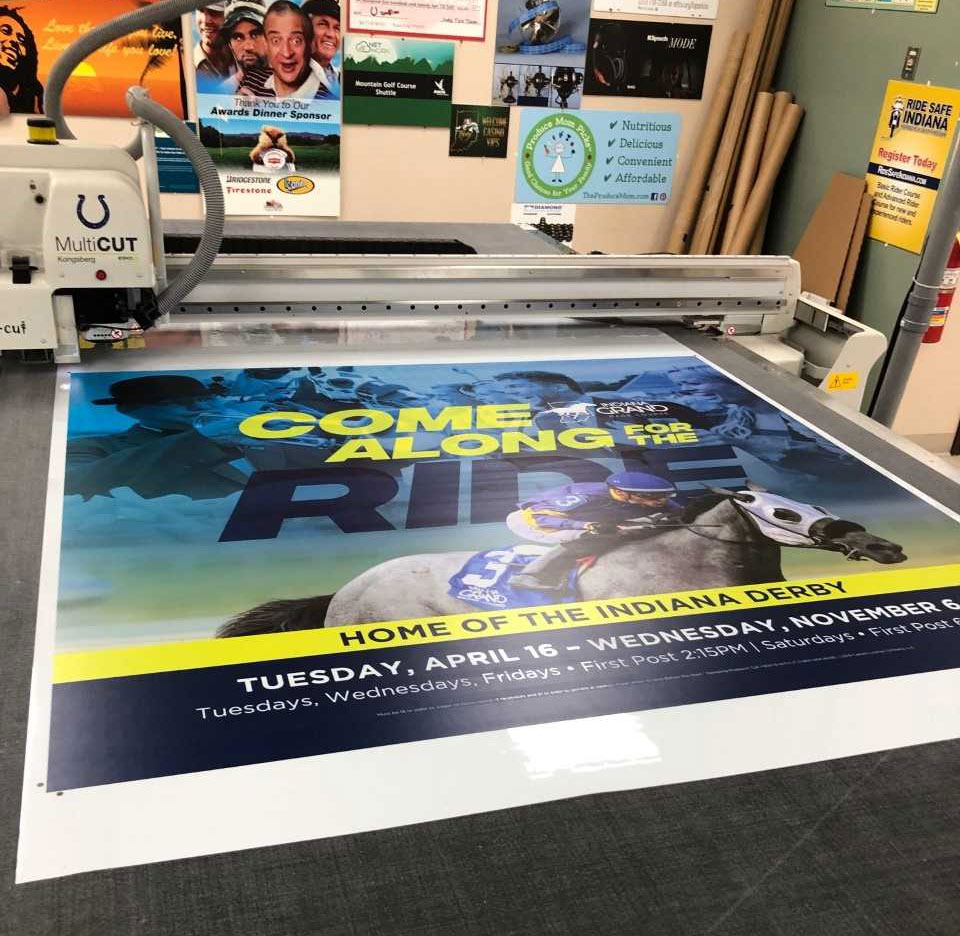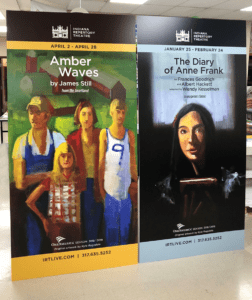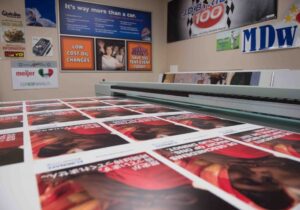Impress Big Time with Large Format Printing

Sometimes, bigger IS better. It can be challenging to attract your audience’s attention when it comes to breaking through the noise of advertising that the average person sees in a day (estimated between 6,000 and 10,000 ads). Large format printing makes your brand stand out, providing the perfect medium for getting attention among the crowd.
What is Considered Large Format Printing?
Large format printing generally refers to any materials exceeding 40 inches in width or height. Printing your large format projects may include specialty services such as:
● Complex, precision-cut graphics
● Cutting, scoring, and routing rigid materials up to one inch thick
● Printing 72” up to 100 ft on flexible roll material & routing rigid material up to 48” x 96”
On what materials can you print using a large format printer?
You can print on just about anything, including:
● Vinyl
● Cloth
● Glass
● Wood
● Foam Board
● Corrugated Plastic
● PVC
● Metal
What are some applications requiring large format printing services?
Examples of large-format graphics and printed pieces include:
● Wall and window graphics
● Floor graphics
● Trade show and convention displays
● Standees and pull-up banners
● Banner printing
● Poster printing
● Corporate decor
● Stadium display printing
● Point of purchase (POP) materials and tabletop displays
● Ceiling danglers and freestanding sign printing
Large Format Printing Considerations
Large format printing means more possibilities for your messaging, but it’s essential to consider the environment in which your audience will be viewing your printed materials to ensure their effectiveness. Some considerations for getting your message across include the following:
● If your large-scale print will be seen up close, from afar, or both, your design images should be 300 dpi so that your images look crisp either way.
● Your text should be large enough to read easily. A good rule of thumb is at least one inch (72 pt.) tall for every 10 feet of viewing distance. Sans serif fonts are easier to read.
● If your audience reads your printed material while walking or driving, the messaging needs to be concise, or your audience will not have time to read it all.
● Consider lifespan, durability, use, and the environment when choosing substrates. Ask your printer for professional advice.
● Colors should be optimized for readability. Keep your designs to 2 or 3 colors, and choose darker (but bright) colors for the backdrop and white or a light color for the text.
● Test the visibility of your design before sending it to the printer. Stand back from the computer to check that you have good color contrast and that your imagery and messaging stand out.
● An inviting and enticing call to action extends the sales and prospecting process beyond just when the reader is in front of your banner. Ensure your signage features the right details to help the audience find more information in their own time. Whether it means including your phone number, email address, or website URL, tell viewers where to learn more and what to do next. Consider making the process even easier by having a scannable QR code.
The Bottom Line on Large Format Printing
You may design the most effective, eye-catching, attention-hogging signage across an entire trade show’s exhibit floor—but if it doesn’t effectively spur interaction or convey what an observer should do next, you may not see the return on your investment.
With professional printing services from Fineline, marketers and event specialists can rest assured that even their largest and most complex designs will be on brand and beautifully brought to life across all sizes of banners, trade show displays, promotional posters, and more.
Reach out to our dedicated team today to discuss your organization’s large format printing needs and Fineline’s vast branding capabilities.
